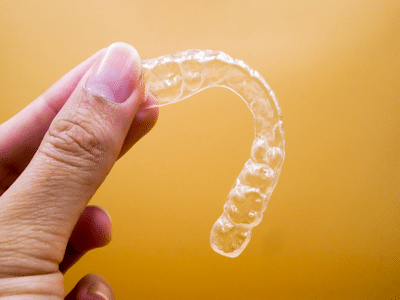
- Switch Your Aligners Before Bed: Switching to your next set of Invisalign aligners is what typically triggers any pain or soreness. Putting your new set of trays in right before you go to sleep means the tightness and pain associated with the tooth movement can be avoided for at least the night. And, by the time you wake up the worst of it will be over!
- Stick to Soft Foods: As always with a new orthodontic appliance or a change in your mouth, soreness can be helped with a soft-food-only diet, at least for a couple of days! We recommend stocking up on some soft braces-friendly food before you know any pain will set in. Here are some ideas:
- Mashed Potatoes
- Ice Cream
- Pasta
- Soup
- Pudding
- Tofu
- Oatmeal
- Applesauce
- Yogurt
- Scrambled Eggs
While there are fewer food restrictions with Invisalign than with traditional braces, keeping to soft foods during times of pain can help your discomfort. You can also add in cold drinks, which serve as a mild numbing agent in your mouth.
- Utilize Your Orthodontic Wax: Orthodontic wax is a great tool to soften the sharp edges of an Invisalign tray. Since trays are made specifically for you, they are the exact shape of your teeth. This means their edges and points can push into gums when a new set of aligners is put in. Using your wax can mitigate that pain!
- Choosing your Invisalign Provider Carefully: Invisalign, and orthodontic treatment, is a big decision. The doctor you choose to do your Invisalign treatment matters. It’s very important that your orthodontist and their team have the right skills to ensure an effective treatment experience. Also, not all patients are good Invisalign candidates. Be sure to check with your orthodontist about the procedure and the number of sessions required before starting treatment.
If you implement these tips, most of your Invisalign-related pain should be relieved. As always, please feel free to contact our office with any Invisalign questions you may have. We’re here to help!




